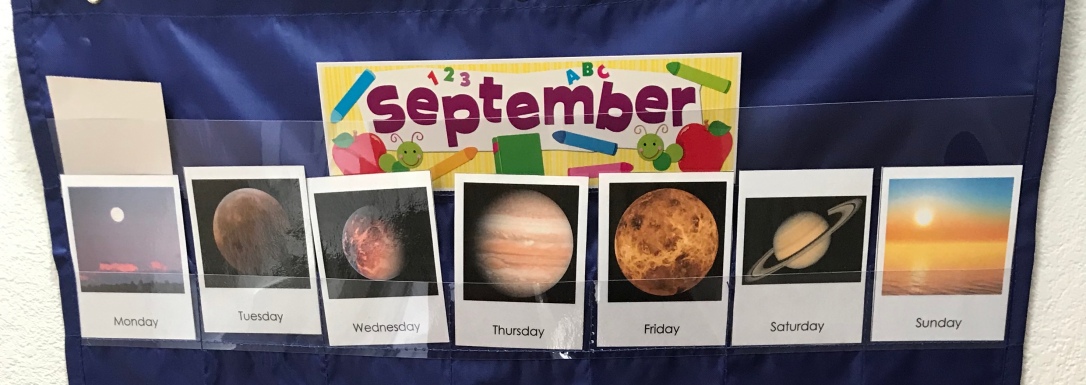Connecting math, language, history and other academic subjects to your child’s real-life experiences makes learning relevant, increases participation, and supports development. A hands-on home calendar is an ideal tool to learn and practice a variety of skills (whether you homeschool or not!). It also provides many opportunities for cultural explorations. Here’s how we use it in our home…
MATH: The first day of each month, I take down the calendar numbers, divide them into three piles (1-10, 11-20, 21-31), mix them up within their piles, and invite my four-year-old to order them and insert them into the calendar slots (I tell her on which day of the week to start). We also calculate how many days are left until a particular event by counting linearly.

LANGUAGE: We read the month card together when we re-set the calendar, as well as the days-of-the-week cards when the numbers are being arranged. We also talk about yesterday, today, tomorrow and next week (to crystallize past, present and future language).
HISTORY: My seven-year-old son recently wanted to know where the names of the week come from, so with the help of these cards we explored the origins of these words and then substituted the control cards for the calendar’s original days-of-the-week cards so we could have a daily reminder of the celestial body and mythological god from which our days of the week originate. Our calendar also comes with cards for all the federal holidays and the major religious holidays from Christianity, Judaism and Islam. We label holidays accordingly on the calendar and sometimes research their origin or how they’re celebrated.

SENSE OF ORDER: Most children thrive on consistency and routine. I made a daily slip that sits behind each number and helps my children know what is happening each day (e.g. ballet each Thursday, allowance each Friday, etc.). We also use small sticky notes to color-code their “show night” (they each have one night a week where they get to pick one episode of one cartoon). The calendar also comes with special “field trip” and “birthday” cards for special events.
The exploration of time can start sensorially years before a child can grasp it abstractly. This simple and engaging tool provides countless learning opportunities and is a mainstay in our Montessori homeschooling environment. Let me know if it works for you!
*This post contains affiliate links.






